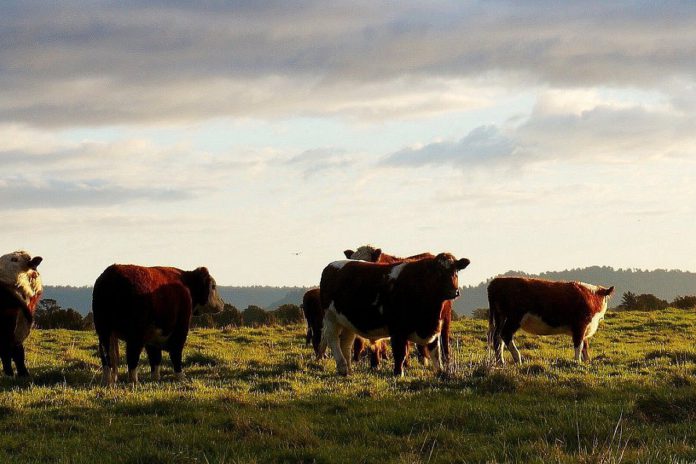There has been a notable increase in the number of Irish born cattle on farms across Northern Ireland, according to the Livestock & Meat Commission (LMC).
During October 2020, there were 996 weanlings and store male cattle imported from Ireland for further production on local farms. This was an increase of 236 head from September 2020 levels and brings imports for the year-to-date to 6,949 head.
Stores
Imports of male store cattle from Ireland have been particularly strong since May 2020. 5,852 in this category were imported during the six months ending October 31st, 2020.
This is an increase from the 1,510 head imported during the corresponding period in 2019 and the 1,737 cattle imported during the same period in 2018.
Females
Similar increases in the number of female cattle being imported from Ireland for further production have been recorded in recent months, the LMC noted.
However, data available from APHIS does not allow differentiation between those intended for beef production and those entering the Northern Ireland dairy herd for milk production.
Using, the latest APHIS data, it is possible to differentiate between female cattle that have been imported from Ireland for beef or dairy production. The increase in the level of cattle import in recent months has resulted in a surge in the number of Irish born cattle on local farms.
Furthermore, cattle for beef production aged from 12-18 months totalled 1,648 head at the end of October 2020, up almost 1,000 head from October 2019 levels.
Table: Cattle imported from ROI for further production on local farms at the end of October 2018-2020 (Beef-sired male and females and dairy males >42 days) Source: APHIS
|
Age (months) |
2018 |
2019 |
2020 |
| 0-6 | 78 | 57 | 689 |
| 6-12 | 1,451 | 3,210 | 7,756 |
| 12-18 | 689 | 693 | 1,648 |
| 18-24 | 2,250 | 2,834 | 7,176 |
| 24-30 | 1,848 | 1,886 | 3,297 |
| >30 | 29,617 | 26,688 | 27,716 |
Meanwhile, cattle on local farms for beef production in the 18-24-month age category totalled 7,176 head at the end of October 2020, up by 4,342 head from year-earlier levels.
The LMC pointed out that imported cattle in the 24-30 month age bracket have also increased to total 3,297 head at the end of this period.
Overall, there were 12,121 Irish born cattle on local farms intended for beef production at the end of last month in the 12-30 month age bracket. This was more than double the 5,413 Irish cattle in this age bracket on local farms at the end of October last year, according to the commission.
Quality assurance status
“Beef produced from cattle imported from ROI for further production is eligible to carry the Northern Ireland Farm Quality Assured logo provided that they have completed the 90-day residency period required on an assured farm in Northern Ireland prior to slaughter.”
“However due to their ‘mixed origin’ or nomadic status, beef from these animals does not qualify to carry the Red Tractor logo which is a requirement of trade with the majority of major retail and foodservice customers in Great Britain.”
“While there is still a market for this mixed origin beef, the range of market outlets are currently more limited and this will most likely be reflected in the prices available for the animals at the point of slaughter.”
“With reports of buyers from Northern Ireland being very active in marts south of the border and strong increases in the number of cattle being imported for direct slaughter, it is important that anyone considering going down this production route has consulted with the procurement staff of the individual processing plants to ensure there is an outlet for the cattle when they are ready for processing.”





